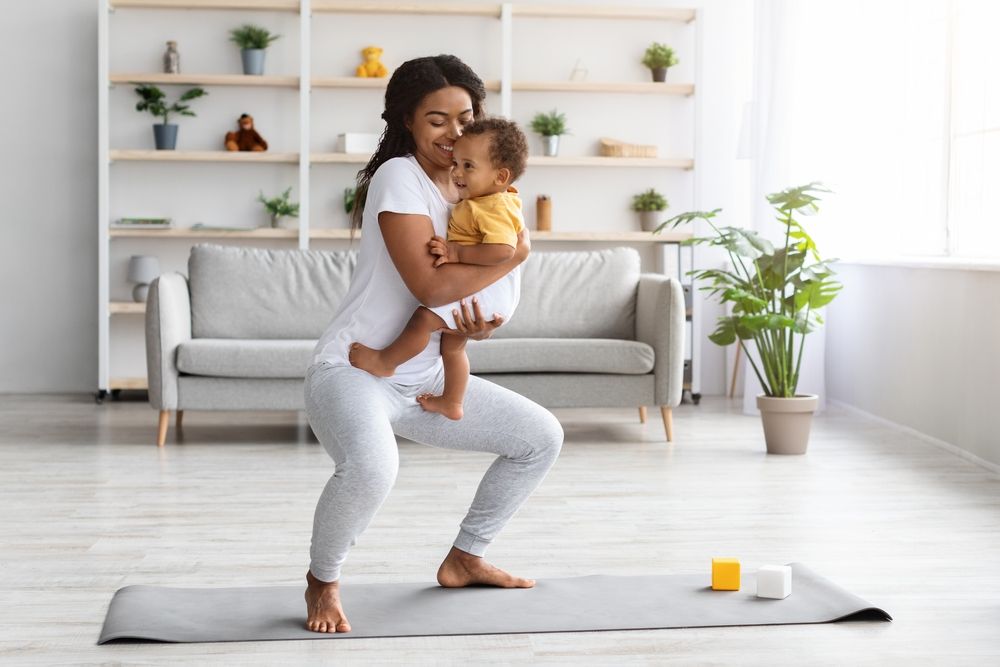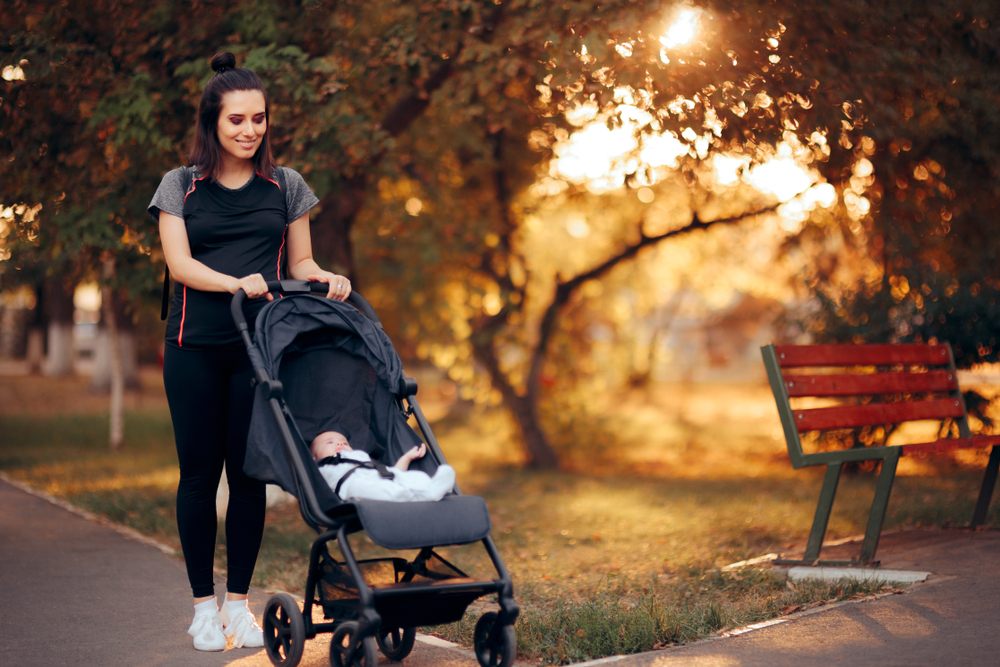After giving birth, many women want to get their pre-baby body back absolutely as quickly as possible. However, this may not be realistic or even safe in many cases, as your body needs time to heal after nurturing a baby and giving birth. Instead, you need to focus on setting realistic Postpartum fitness goals that will help you ease back into working out after giving birth. Whether you try incorporating low-impact workouts or wearing incontinence liners, here are some helpful tips for setting postnatal exercise goals.

Table of Contents
Take it easy during the ‘fourth trimester.’
The “fourth trimester” refers to the six to 10 weeks after the birth, when new moms focus on rest and recovery. Some women who remain very fit during pregnancy and have a very easy birth may be cleared to return to exercise before the six-week mark, but most women wait six to 10 weeks after childbirth before resuming any kind of physical activity. During these first weeks, don’t worry too much about fitness or weight loss and instead focus on spending time with your new baby and adjusting to your routine. This will also give time for lochia (vaginal bleeding and discharge) to resolve, so you don’t have to exercise while wearing bulky pads.
Always consult your doctor first
Every pregnancy and birth is different, which is why you should always consult your doctor before embarking on your postpartum exercise plan. For instance, exercise recommendations vary depending on whether you had a vaginal birth or a C-section, as well as any kind of complicated delivery. Your personal health history will also affect what type of physical activity you can do and how soon. Always talk to your doctor before exercising after giving birth.
Move a little every day
No matter what kind of delivery you had, you will almost certainly be cleared to walk around 24 hours after giving birth. Daily gentle movement such as walking is extremely important for preventing blood clots in your veins, which can become a life-threatening deep vein thrombosis (DVT). In particular, having a C-section birth increases your chances of developing a DVT. When you are awake, try moving around every one to two hours to get your blood flowing and help prevent clots – unless your doctor instructs otherwise. Contact your doctor immediately if you show any signs of a blood clot.

Be prepared for bodily changes
If you exercised before or during pregnancy, you need to be prepared for certain bodily changes that will affect your workouts. As an example, your muscles will likely feel weak and stretched out after pregnancy and birth. You will also likely experience postpartum incontinence that requires the use of bladder control products, especially if you gave birth vaginally. Choose workouts that accommodate your new post-pregnancy body and that don’t exacerbate any health issues you are having.
Focus on posture and form
Speaking of bodily changes, you will probably have to relearn your exercise form all over again after giving birth. For one, you’ve been carrying your weight in the front for 9+ months, and you’ll still have some lingering pregnancy weight that can throw off your balance. Your ligaments and joints will also be much looser than normal, thanks to your body’s secretion of relaxing, which makes it much easier to accidentally overstretch or overextend your limbs. As you ease back into working out, focus on your posture and form instead of increasing intensity or weights. This will prevent injury and increase your stability over time.
Start with low-impact workouts
After pregnancy, the last thing that you want to do is jar your body with high-impact workouts (especially if you’re still leaking a bit). Instead of running and jumping around, consider low-impact workouts such as yoga and Pilates that will not cause any jolting. Swimming can also be a great post-pregnancy option if you have access to a pool. If you’re not sure how to get started, then consider seeking out postnatal exercise classes specifically tailored to new moms, either online or in person.

Rebuild your pelvic muscles
Even if you don’t give birth vaginally, many women experience weakening of the pelvic muscles during pregnancy due to the constant pressure of the growing baby. Thus, many doctors recommend doing pelvic floor exercises that specifically target these muscles in order to strengthen them. If you have trouble identifying the correct muscles, using Kegel balls can help. Depending on the weight, Kegel balls can also help increase the intensity of the exercise once you are ready to take things up a notch.
Don’t compare yourself to other moms
It can be really tempting to compare yourself to other moms, not just when it comes to postpartum fitness. However, the only person who can set realistic postpartum fitness goals for you is… yourself. As we said earlier, every mom, baby, and birth story is different, and one mom’s realistic exercise goal can be too intense and even dangerous for another mom. Focus on yourself and your body when deciding on your postnatal fitness routine.
Watch out for warning signs
You should keep a sharp eye out for physical signs that you are pushing yourself too hard. You should immediately cease exercise if you experience any pain, especially in the abdominal or vaginal area. You should also stop if it increases or causes postpartum bleeding. If you are breastfeeding, extremely intense exercise can reduce your milk production or dry it up completely, so watch out for that as well. Talk to your doctor if you start experiencing any of these side effects after pregnancy.
When getting back into exercising after giving birth, always listen to your body and let it be your guide. Take as much rest and recovery time as you need, and it will pay off later with more strength and stamina in the long run.

